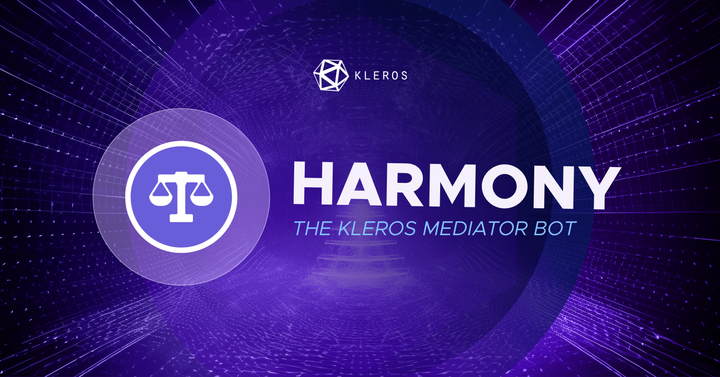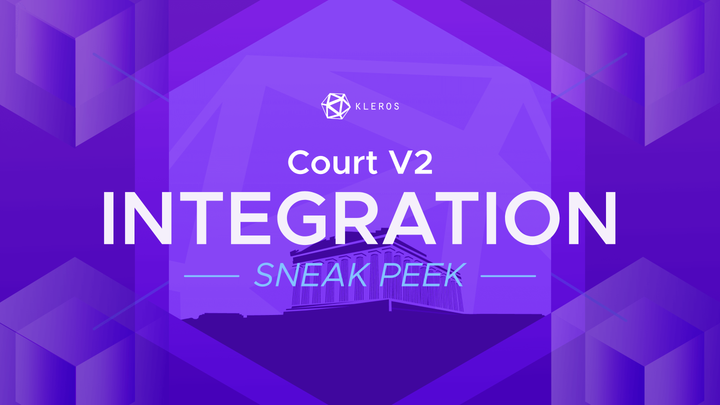Kleros Mediation Bridge: A Cohesive Approach Blending Traditional Mediation and Kleros Blockchain Arbitration
How would Kleros work in the context of modernizing the traditional mediation process? Join us on this exploration with Robert Dean and Federico Ast.
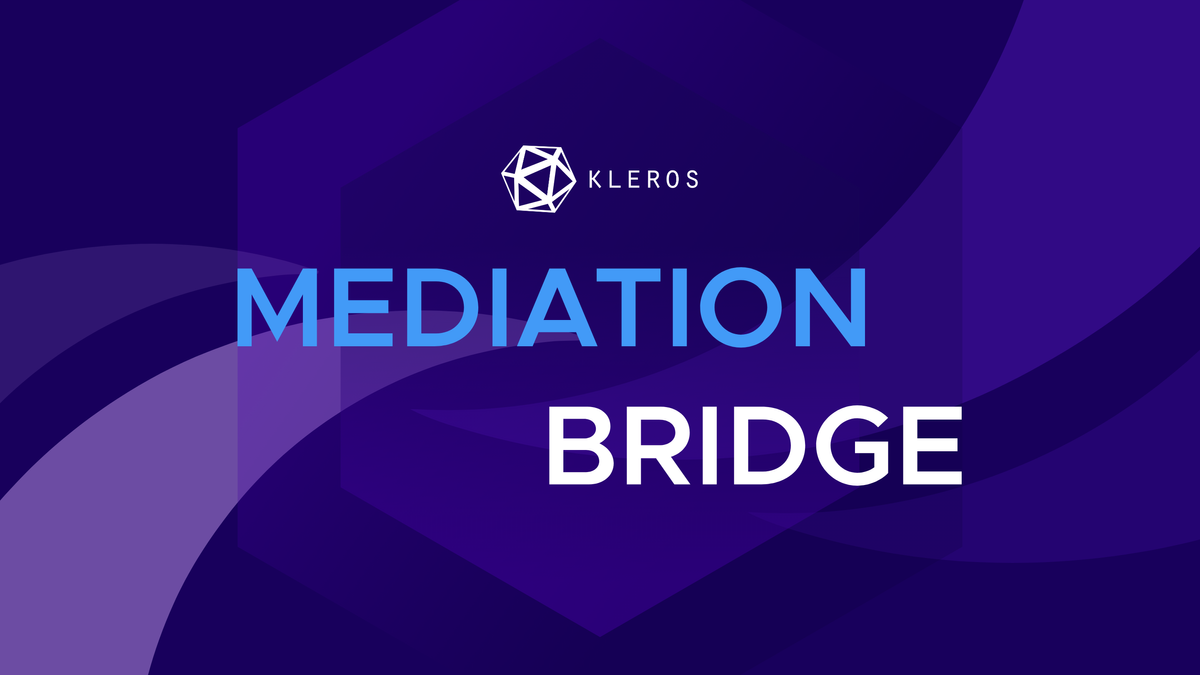
This article envisions a future where parties embark on a hybrid dispute resolution process, beginning with mediation and seamlessly transitioning to Kleros for a transparent, efficient, and cost-effective resolution.
By Robert Dean, Associate Director at Driver Trett, and Federico Ast, President at Coopérative Kleros.
As the world evolves and technology continues to shape our lives and businesses, dispute resolution must not remain static. We stand on the brink of an innovative fusion, where traditional resolution mechanisms intertwine with cutting-edge blockchain technology.
The result is an adaptive, transparent, and fair process, and at the forefront of this transformation is Kleros.
Kleros, a blockchain-based dispute resolution protocol, utilises concepts from game theory to deliver just decisions across a plethora of disputes. In Kleros cases, randomly chosen jurors review the evidence and vote on an outcome.
Incentivised by staking tokens, which they risk losing if they vote incoherently, jurors are encouraged to render careful and well-considered decisions. The transparency and deterrent against manipulation are secured by the underlying blockchain architecture.
Different authors and specialists have proposed different ways in which Kleros decisions could interact with the off-chain world.
In this article, we envision a future where, right from the onset, parties agree to a hybrid dispute resolution process. Initially, they engage in traditional mediation, aided by a mediator's insight and skill. If the dispute remains unresolved, Kleros steps in, ensuring a transparent, efficient, and cost-effective resolution, with a final judgement delivered by a panel of jurors.
This hybrid model represents a paradigm shift in how parties approach dispute resolution. Rather than seeing mediation as a separate, distinct process, it becomes the first step in a cohesive, structured journey towards resolution.
This journey is not sequential, where one method is abandoned for another, but integrative, where the strengths of one method complement the strengths of the other.
A Construction Dispute
XYZ Constructions was contracted to build a new shopping complex for ABC Retail Group. The project had an agreed completion time of 18 months, but it took 24 months to complete, resulting in a six-month delay.
Now, ABC claims the delay had significant financial implications on their business, including loss of potential rent and additional loan interest.
Furthermore, ABC is not satisfied with the quality of some of the construction work. They have identified issues with the HVAC (Heating, Ventilation, and Air Conditioning) system and the roofing. They're demanding compensation for the delay and for the cost to rectify the perceived poor quality of construction.
XYZ argues that the delay was caused by changes requested by ABC during the project, and that the quality of the work meets the standards stipulated in the contract.
How the Kleros Mediation Bridge Works
The Kleros Mediation Bridge is an approach blending traditional mediation and blockchain arbitration. This is how it works...
Stage 1. Breaking Down the Issues.
ABC and XYZ agree to use the Kleros Mediation Bridge methodology and select a mediator who is knowledgeable about the construction industry and the Kleros platform.
The first step for a mediator is to dissect the dispute into its primary components. This involves understanding the various claims and counterclaims made by each party and grouping them into distinct, manageable issues. For example, a construction dispute could be separated into delays, cost overruns, quality issues, or contract interpretation.
By treating each issue separately, the mediator can keep discussions and negotiations focused, making the process more efficient.
Stage 2. Discovering Core Interests.
Underneath every dispute are the core interests of each party. The mediator's role is to help each party identify and articulate these interests. This understanding is crucial in framing the binary outcomes - the proposed solutions should address these underlying interests.
The mediator facilitates a dialogue between ABC and XYZ, helping them identify the primary points of contention: the project delay and the alleged quality issues with the HVAC system and the roofing. They attempt to reach a resolution through negotiation.
Stage 3. Developing Binary Outcomes.
The next step is to create binary outcomes for each distinct issue. Each outcome should reflect a possible resolution. To ensure the efficiency of this process, the mediator can:
- Use the information obtained during mediation: Mediation often brings to light the parties' priorities, their red lines, and the areas they are flexible in. This information can guide the formulation of the binary outcomes.
- Engage in shuttle diplomacy: The mediator can meet each party privately to discuss potential outcomes. This helps the mediator to understand each party's perspective better and aids in crafting more realistic and acceptable outcomes.
- Use a range of options: Each binary option should reflect a realistic range of potential resolutions, from the best-case scenario for one party to an acceptable outcome for the other. This ensures that both parties have a vested interest in the process.
As full resolution isn't achieved, the mediator assists in defining two potential outcomes for each dispute.
For the delay, the outcomes might be:
Outcome 1: XYZ pays ABC $2 million for the losses caused by the delay.
Outcome 2: XYZ pays ABC $500,000, considering the changes requested by ABC during the project contributed to the delay.
For the HVAC system:
Outcome 1: XYZ pays ABC $1 million for the costs to rectify the HVAC system.
Outcome 2: XYZ pays ABC $100,000 as the HVAC system only needs minor adjustments and not a complete overhaul.
For the roofing:
Outcome 1: XYZ pays ABC $1.5 million for the costs to rectify the roofing.
Outcome 2: XYZ pays ABC $200,000 as the roofing meets contractual standards and only minor fixes are required.
Stage 4. Submission to Kleros.
Once the binary outcomes have been developed, the mediator should review them with each party individually, and then together, refining the outcomes as necessary based on the feedback.
ABC and XYZ, with the mediator's assistance, submit the binary outcomes along with relevant evidence to Kleros. Evidence might include the original contract, emails discussing project changes, expert reports on the HVAC system and the roofing, etc.
To make the process cheaper:
- The mediator can encourage parties to use technology for communication and document sharing, thereby reducing logistical costs.
- The mediator can emphasise the importance of effective preparation. Well-prepared parties can help reduce the time (and hence the cost) required to distill the dispute into binary outcomes.
- The use of standardised formats and templates for submission to Kleros can also reduce the cost and time required for preparing the case. By way of example:
1. Case Identification.
- Case Title: A short, descriptive title for the case.
- Case Number: An identification number for the case, if available.
- Parties Involved: Names (or pseudonyms, if privacy is a concern) of the parties involved.
2. Binary Outcomes.
- Proposed Outcome A: A brief, clear statement of the first proposed outcome.
- Proposed Outcome B: A brief, clear statement of the second proposed outcome.
3. Summary of Dispute
- A concise explanation of the dispute, explaining the context and the issues at stake. This should be objective and neutral, focusing on facts rather than assigning blame.
4. Supporting Evidence for Outcome A.
- Evidence Item (e.g., contracts, invoices, photos, emails, etc.): Brief description of the item.
- Relevance: Explanation of how this item supports Outcome A.
5. Supporting Evidence for Outcome B.
- Evidence Item: Brief description of the item.
- Relevance: Explanation of how this item supports Outcome B.
The idea here is to present all the necessary information as clearly and succinctly as possible, while making it easy for the jurors to understand the issues at stake and the evidence supporting each proposed outcome. This structure can help streamline the case preparation process, making it more efficient and cost-effective.
Stage 5. Kleros Decision.
Jurors are randomly chosen to review the evidence and vote on each binary outcome. The decision is reached based on the majority.
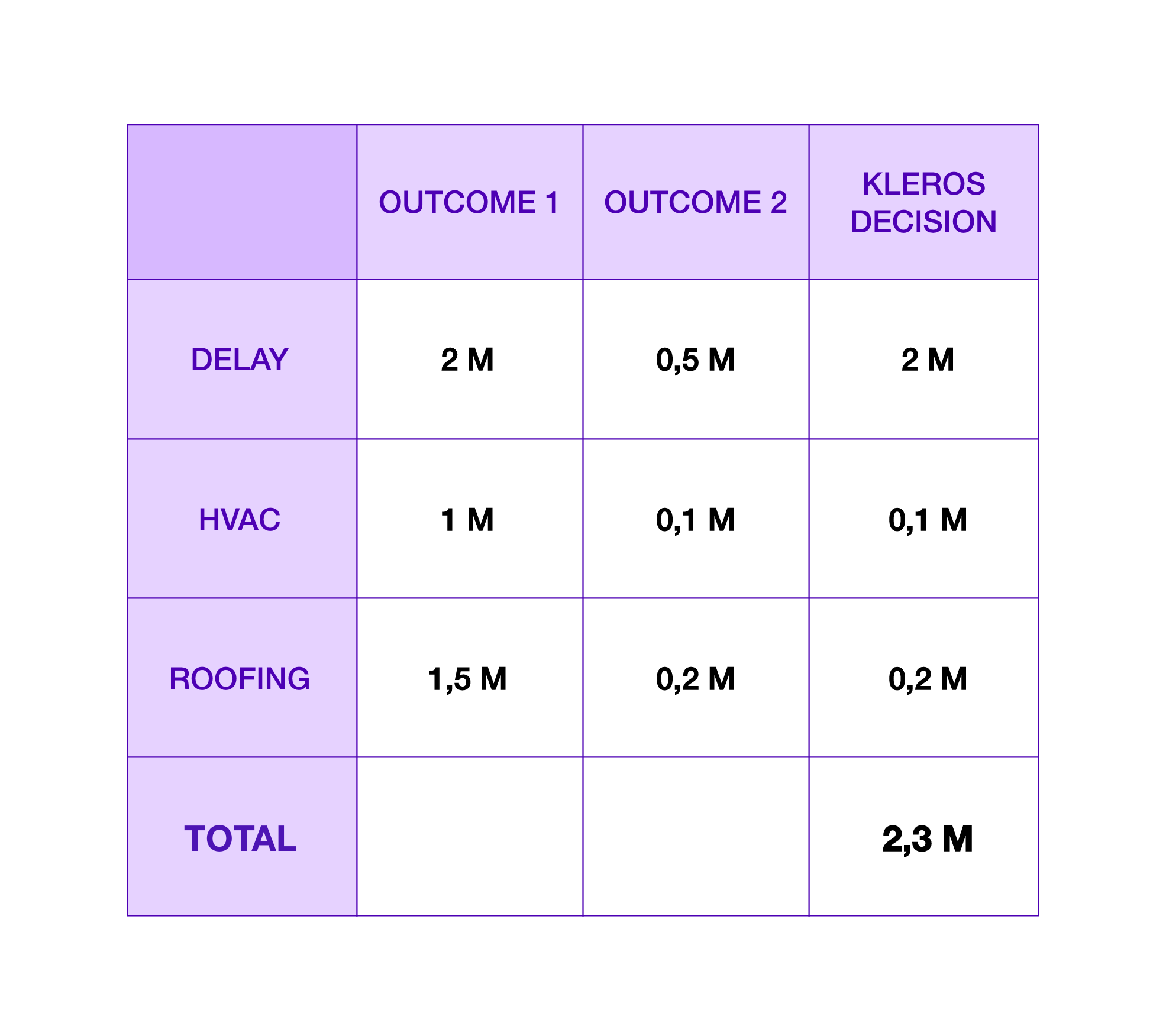
Stage 6. Enforcement.
After the Kleros decision, the mediator helps ABC and XYZ incorporate the decision into a Master Settlement Agreement (MSA), which is enforceable under the Singapore Convention on Mediation.
In this way, the hybrid model allows a complex construction dispute to be broken down into separate issues and independently resolved, which may not only lead to a faster resolution, but also a more satisfying and fair outcome for both parties.
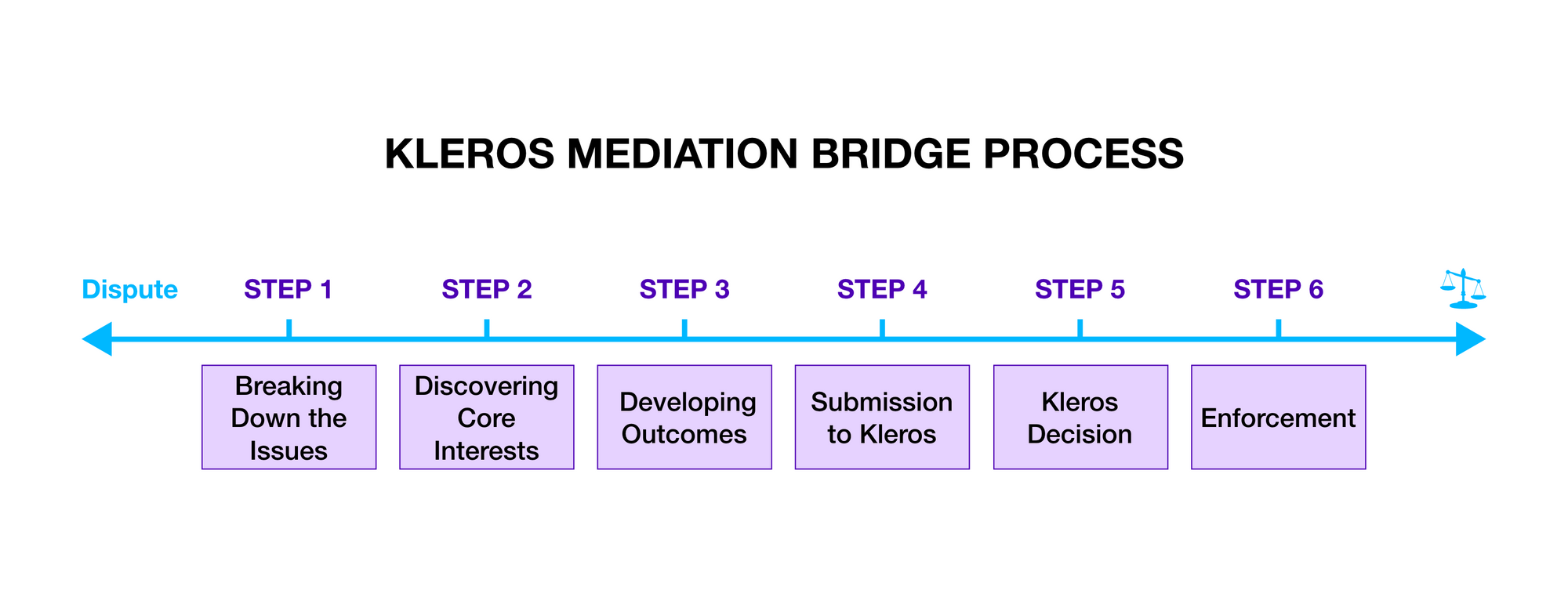
Kleros and Mediation
The approach suggested in this article blends the best of both traditional and technologically advanced methods.
The human touch and expertise of a neutral mediator ensures the process remains sensitive to the subtleties of each issue, while the blockchain-based Kleros system provides an efficient, transparent, and cost-effective means to achieving a decision on contentious matters that either could not be resolved via negotiation, or that the parties simply preferred to involve a jury to determine.
The mediator, who is familiar with the Kleros platform, plays a crucial role throughout the process, from helping parties prepare their binary position documents for Kleros, to encouraging them to use the platform for dispute resolution. This will likely require mediators to have a sound understanding of the Kleros system and its operation.
The enforcement of the Kleros decision or Master Settlement Agreement (MSA) in real-world scenarios is supported by the 2019 Singapore Convention. This Convention aims to provide a framework for the international enforcement of mediated settlements.
The Kleros decision is thus seen as the outcome of an extended mediation process. By adhering to the principles outlined in the Singapore Convention, globally enforceable mediated settlements become significantly more achievable.
The integration of Kleros with traditional mediation represents a promising step towards modernising and enhancing alternative dispute resolution. This fusion combines the human touch of mediation with the efficiency and certainty of blockchain-based decision-making.
However, this model is not intended to replace traditional legal mechanisms, but rather to supplement them. It is designed to give parties more options for reaching a fair and efficient resolution, particularly in instances where traditional routes may be cost-prohibitive or excessively lengthy.
Of course, challenges remain. The successful implementation of this hybrid model will require careful planning and clear communication to ensure that all parties understand the process and its potential implications. Legal and regulatory frameworks will also need to evolve to accommodate these new methods of dispute resolution.
We remain optimistic. As with any significant change, we expect growing pains. But we believe that the benefits - the democratisation of justice, improved access to quality dispute resolution, and the ability to quickly and fairly settle disputes in a rapidly evolving digital world - make this venture worthwhile.


